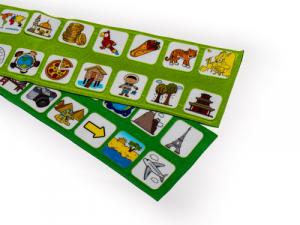4 Top Tips For Using Writing Prompts In Primary Classes
“Don’t you know who I am?”
“Yes. I just don’t care.”
Nope, it’s not the first ten seconds of your lesson from hell – but one of many creative writing prompts that you may uncover with a little basic Googling.
When it comes to getting the creative juices flowing, writer’s block is fairly universal, no matter the age. As a result, writing prompts are part and parcel of the budding author’s toolkit; however, for primary age children (especially in KS1), you may need to be a little more creative in order to rustle up confidence and get pencils to hit the paper, as opposed to being nervously chewed.
Here are our top tips to get you started.
1. Don’t just set a title.
Depending on your teaching preferences, setting a title can be a writing prompt. However, it’s arguably not the most effective one in regard to persuading children to explore their ideas.
A prompt doesn’t need to be a title – it can be a sentence in its own right, a picture, or even a piece of music. The more open-ended and subjective the prompt is, the more creative the output will be – the aim is to encourage children to have the confidence to explore their imaginations, as opposed to sticking rigidly to a theme and earning green ticks for doing so.
2. Have an array of writing prompts to choose from.
We all know that no two children are the same. 
They may have an almost identical background, ability level, culture and taste in Spiderman backpacks, but their learning styles could be completely different. As teachers, dealing with this situation daily is one of our greatest challenges.
Where some children respond well to reading a story opener and feel inspired, others may find the concept of reading anything to be an instant turn-off. Vary the prompts that are available to the class – a selection of written openers and a mix of images should help children to find something that interests them and spark a desire to discuss it further.
This leads on to the fact that talking about an idea before committing to writing it down is key. If a child is drawn to a theme or image, perhaps have a chat about what the theme or image could be, and where it could develop. A little reassurance that their interpretation has value could be just what’s needed to turn a passing interest into a compelling story.
3. Remove the ‘right’ and ‘wrong’.
If children are to gain confidence in sharing their ideas, they need to feel reassured that their ideas won’t be mocked or criticised.
An ‘idea’ can’t be wrong. Encourage the class to write about it freely and fully; grammar and spelling can be refined later. Although tempting to reinforce these elements from the start, prompts are the first step to creativity becoming a habit – allow it to flow and the technicalities of writing can be built on these foundations.
4. Use all your senses!
Smell might be a tricky one, but sight, sound and touch can all be used to create engaging writing prompts.
Pictures can form compelling visuals to inspire a great story, but so can music – particularly if it has few lyrics. How do the children feel when they listen to a piece of music? What does it remind them of? Where does it take them?
Similarly, tactile objects can also create some interesting narratives. Try introducing a ‘feely bag’ containing random items – if the item can inspire a conversation, it can most likely inspire a story, too.
How can Mighty Writer help?
Founder Emma Ralph discusses how Mighty Writer can transform literacy results in your classroom, almost overnight! (30sec.)

 Want to learn more?
Want to learn more?